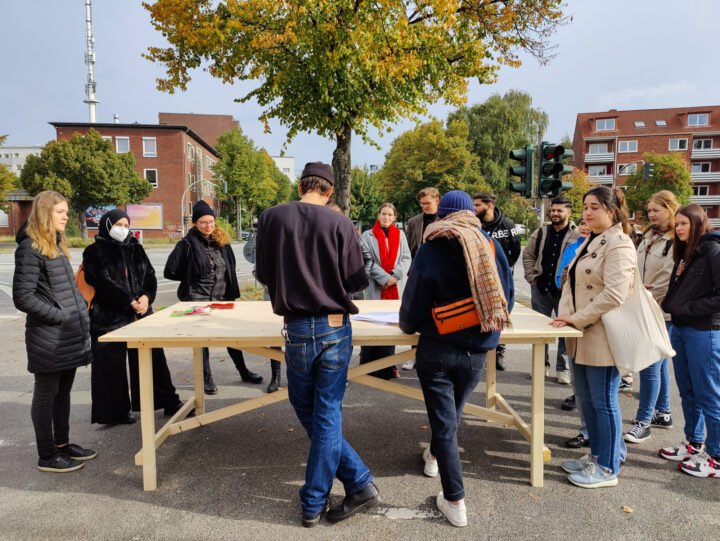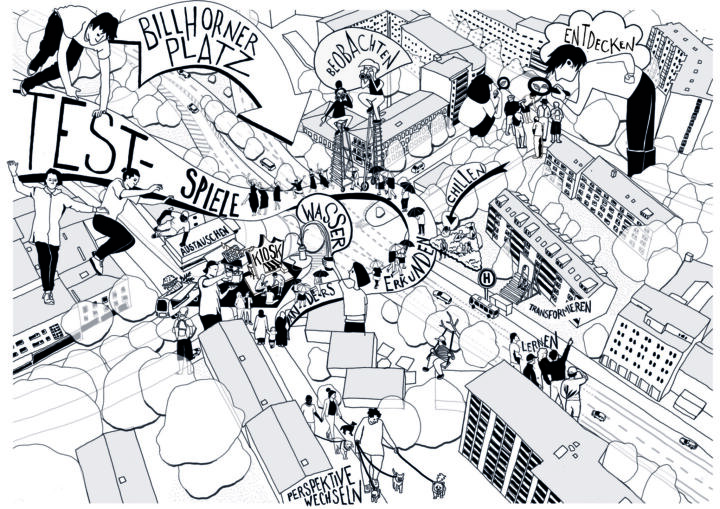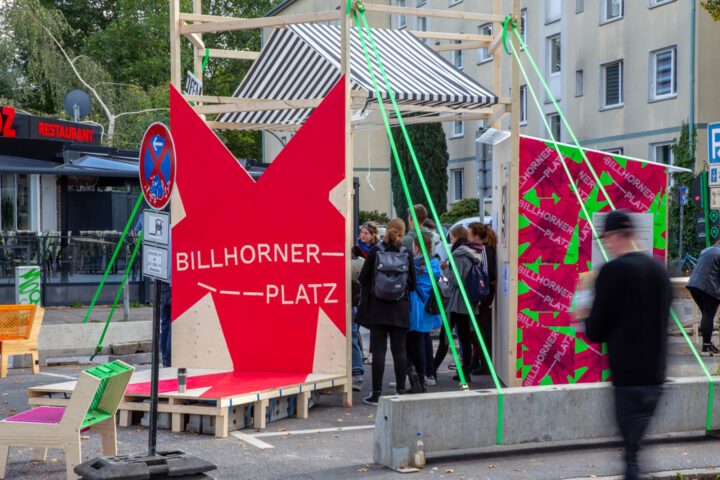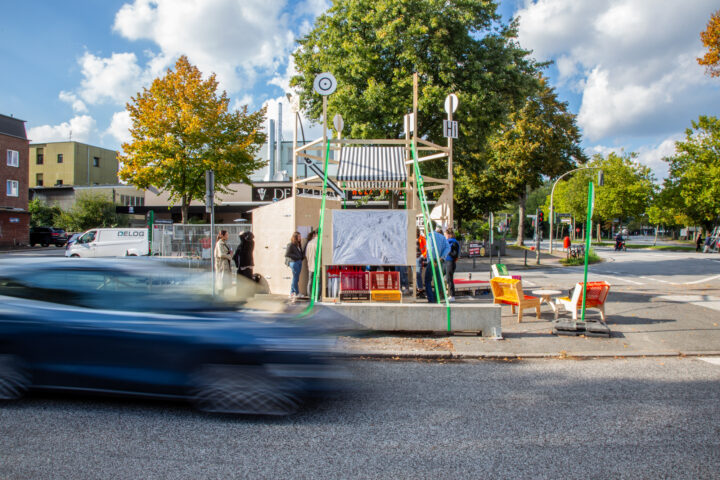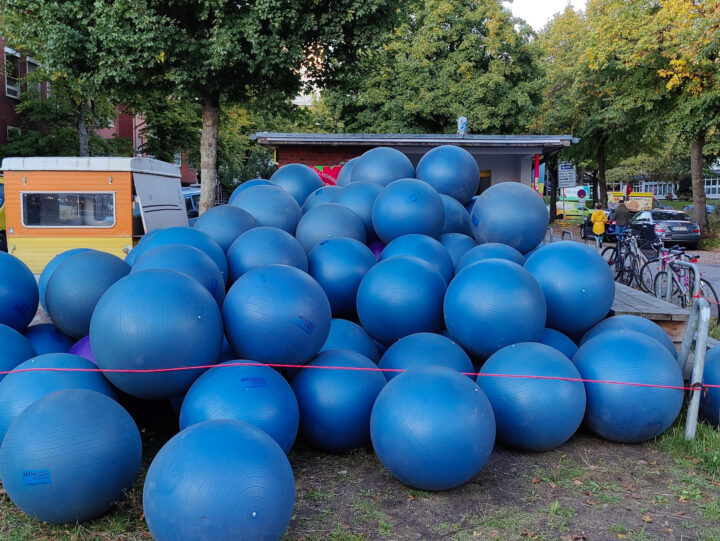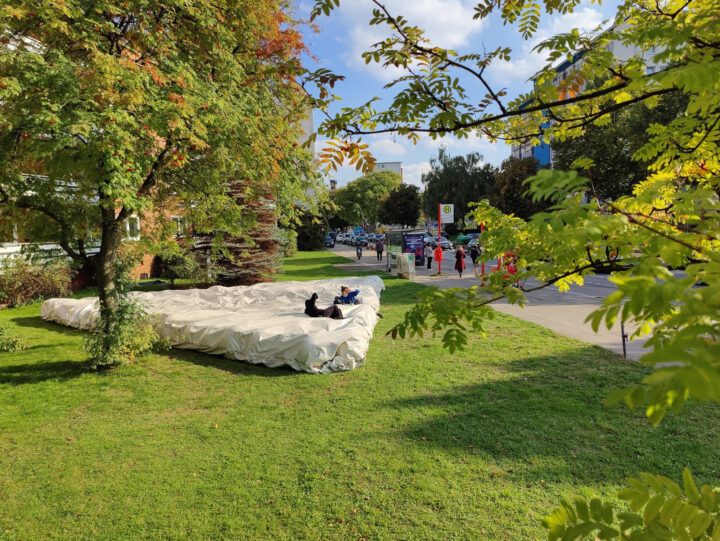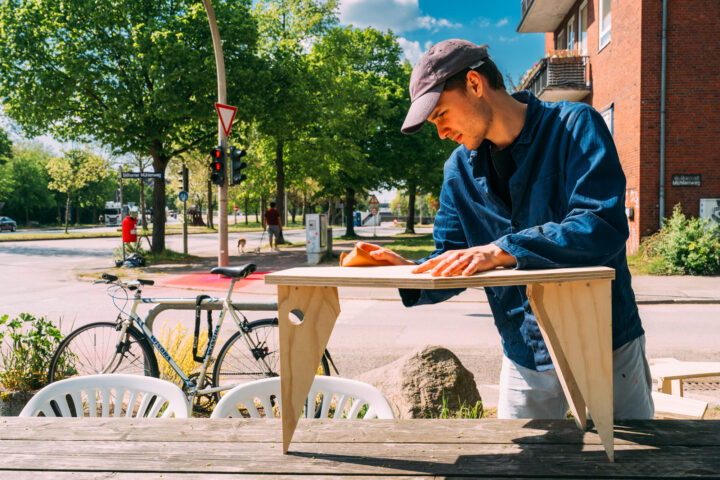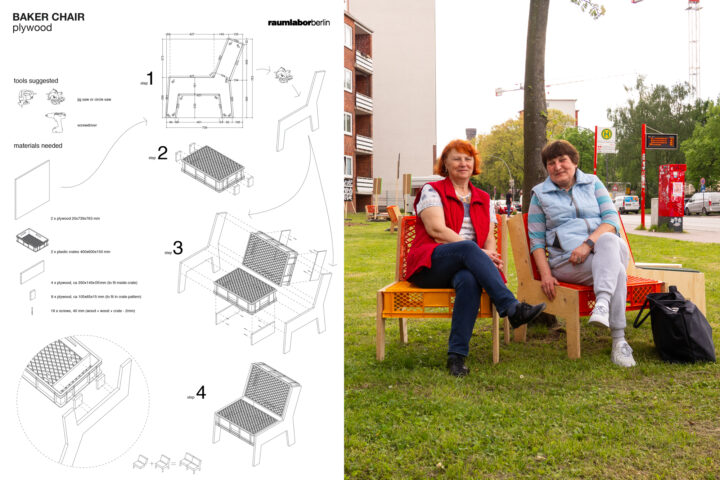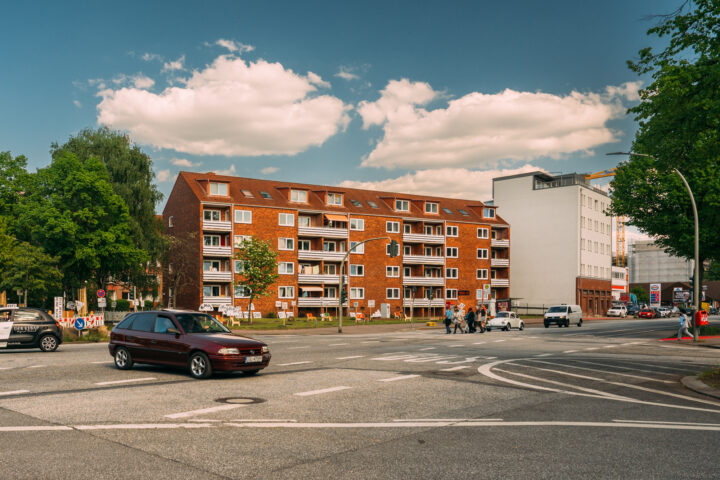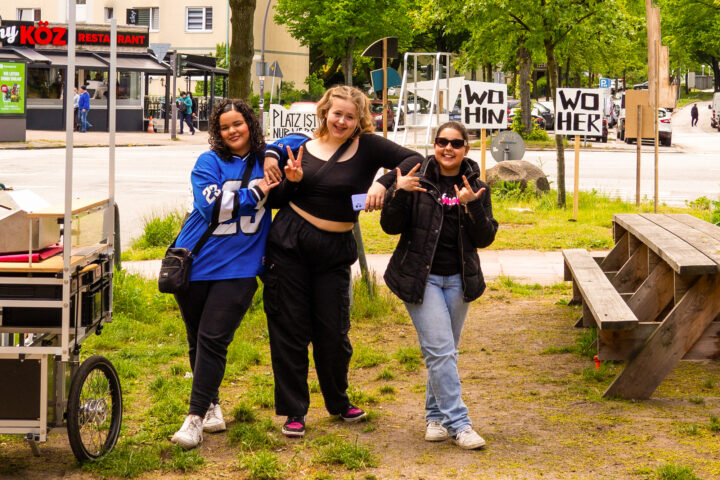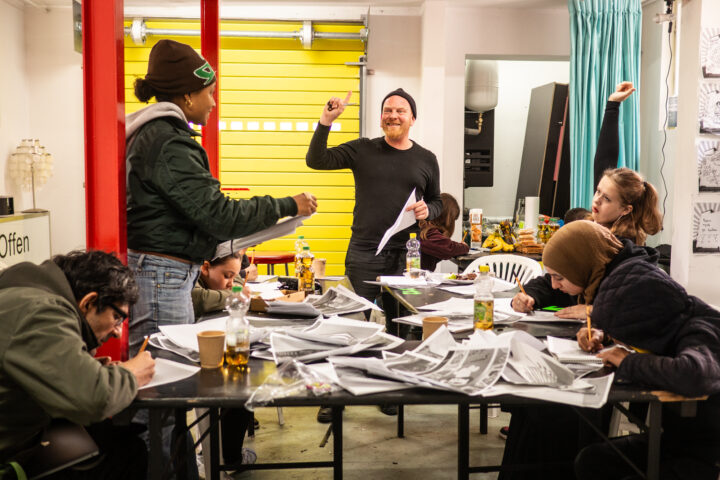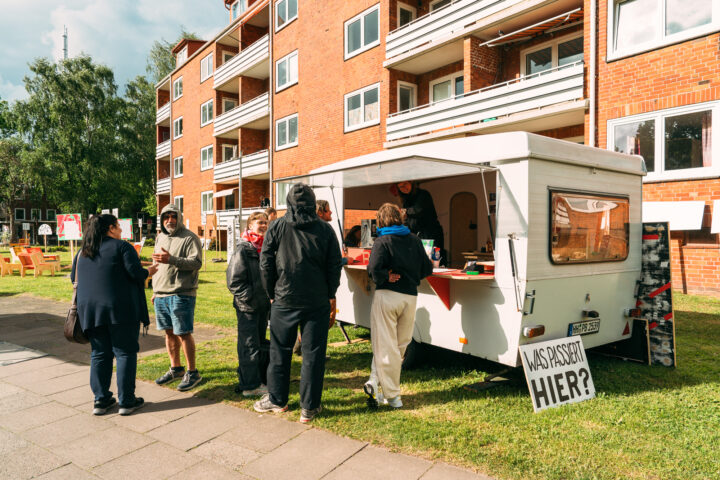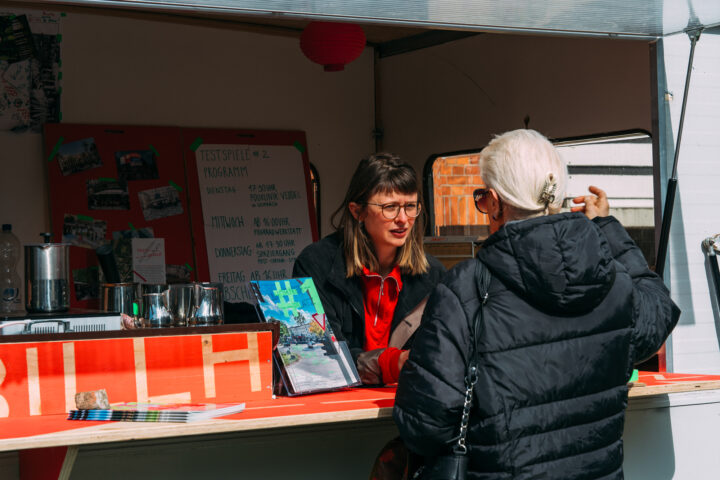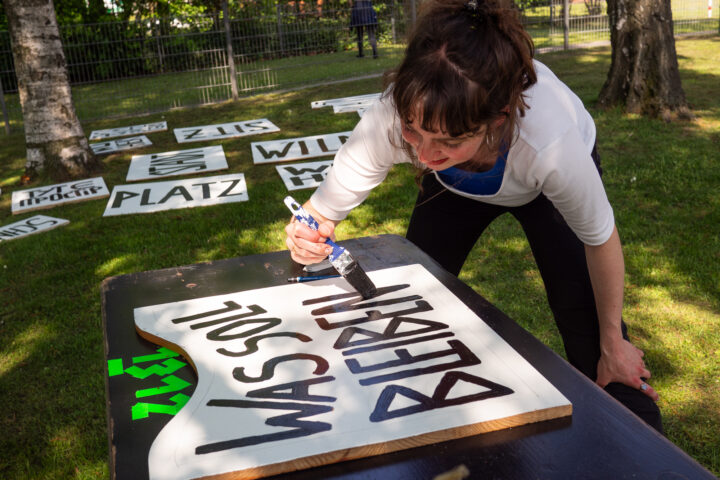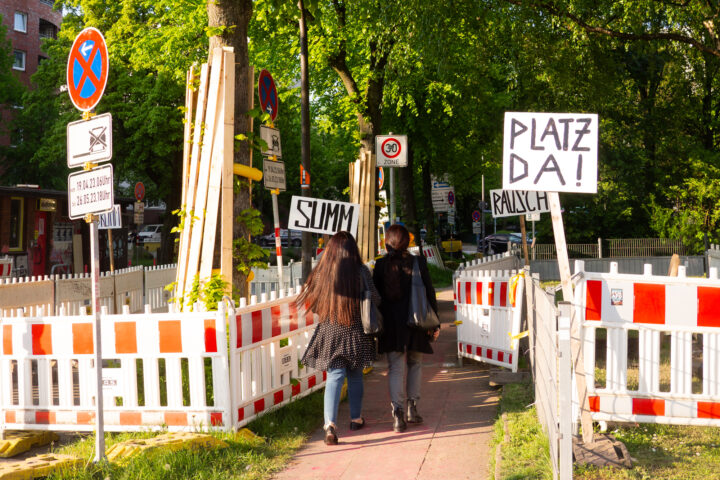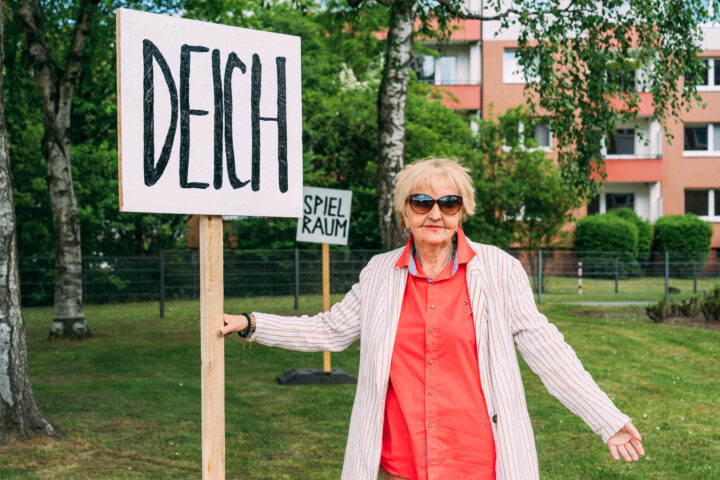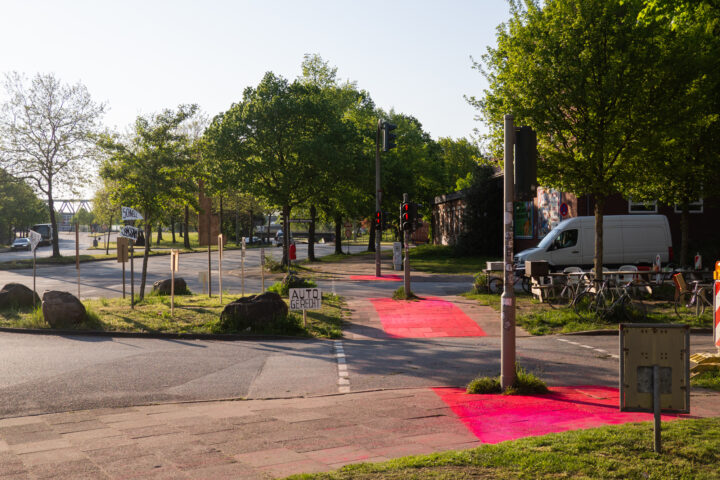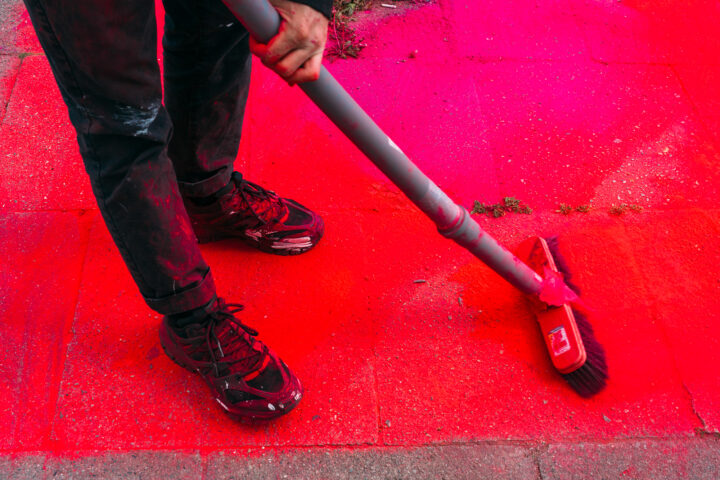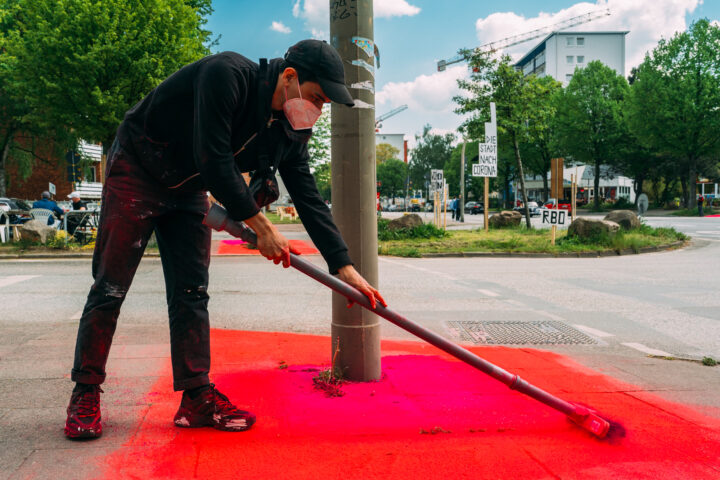Billhorner Platz
Das Projekt Billhorner-Platz widmet sich Perspektiven auf Stadt und Stadtplanung während und nach der Covid-19 Pandemie. Anhand einer konkreten Situation im Stadtteil Rothenburgsort – der Kreuzung Billhorner Mühlenweg / Billhorner Röhrendamm – wird sich diesen in kollaborativ-forschenden Formaten genähert. Der von Herbst 2022 bis Frühjahr 2024 laufende Prozess setzt dabei auf die Erfahrungen und das Wissen der Menschen vor Ort.
Die dafür beauftragte Arbeitsgemeinschaft aus raumlaborberlin und projektbüro aus Hamburg gestaltet einen lokal verankerten Prozess. Ziel ist es, die gewonnenen Erkenntnisse in eine bleibende Struktur zu überführen. Testspiele Billhorner-Platz ist eines von 17 Pilotprojekten des Forschungsprogramms Post-Corona-Stadt, der Nationalen Stadtentwicklungspolitik des Bundesministeriums für Wohnen, Stadtentwicklung und Bauwesen (BMWSB) und findet auf Initiative der Behörde für Stadtentwicklung und Wohnen der Freien und Hansestadt Hamburg statt. Das Projekt wird durch das Bundesministerium für Wohnen, Stadtentwicklung und Bauwesen im Rahmen der Nationalen Stadtentwicklungspolitik gefördert.
The project Billhorner-Platz is dedicated to perspectives on the city and urban planning during and after the Covid-19 pandemic. Based on a concrete situation in the district of Rothenburgsort – the intersection of Billhorner Mühlenweg / Billhorner Röhrendamm – these are approached in collaborative-research formats. The process, which will run from fall 2022 to spring 2024, relies on the experience and knowledge of local people.
The consortium commissioned for this purpose, consisting of raumlaborberlin and projektbüro from Hamburg, is designing a locally anchored process. The goal is to transfer the knowledge gained into a permanent structure. Testspiele Billhorner-Platz is one of 17 pilot projects of the Post-Corona City research program, the National Urban Development Policy of the Federal Ministry of Housing, Urban Development and Building (BMWSB) and takes place on the initiative of the Department of Urban Development and Housing of the Free and Hanseatic City of Hamburg. The project is funded by the Federal Ministry of Housing, Urban Development and Construction as part of the National Urban Development Policy.
Zu Beginn luden mehrere Spaziergänge und räumliche Interventionen rund um die Kreuzung die Stadtbewohner:innen dazu ein, die Perspektive zu wechseln. Den Auftakt machte Lisa Marie Zander von projektbüro mit einem Nachtspaziergang. Mit neongelben Stiften kartierten die Teilnehmer:innen während des Spaziergangs unterschiedliche Beleuchtungssituationen in einer zuvor ausgeteilten „Nachtkarte“. Ein anderer Spaziergang mit dem Thema Wasser startete auf dem Betriebsgelände von Hamburg Wasser. Die Flächen zwischen Billhorner Deich und Vierländer Damm sind für viele Bewohner:innen als auch Besucher:innen des Stadtteils terra incognita. Den Abschluss am Sonntag machte die Künstlerin Julia Nordholz mit einem Spaziergang zum Thema Stadtkräuter.
Für alle Spaziergänge standen Dolmetscher:innen in English, Französisch und Türkisch bereit. Als Treffpunkt und gut sichtbare Landmarke entwarf raumlaborberlin die Anlaufstelle – eine Art Kiosk aus Holz, den projektbüro und raumlaborberlin mithilfe einiger Leute aus dem Umfeld des Mikropols, einem Projekt und Ort für stadtteilöffentliche Nutzungen direkt gegenüber der Anlaufstelle, in wenigen Tagen auf der eigens dafür gesperrten Parkplatzfläche im Süden der Kreuzung errichteten. Abseits der Führungen lud die Anlaufstelle zu Tee, Essen und Austausch für Interessierte ein. So ergaben sich viele zufällige als auch geplante Begegnungen mit Bewohner:innen als auch Besucher:innen.
In the beginning, several walks and spatial interventions around the crossroad invited the city dwellers to change their perspective. Lisa Marie Zander from projektbüro kicked things off with a night walk. During the walk, the participants used neon yellow pens to map different lighting situations on a previously distributed „night map“. Another walk with the theme of water started on the premises of Hamburg Wasser. The areas between Billhorner Deich and Vierländer Damm are terra incognita for many residents as well as visitors of the district. On Sunday, the artist Julia Nordholz concluded the event with a walk on the theme of urban herbs.
Translators in English, French and Turkish were available for all walks. As a meeting point and highly visible landmark, raumlaborberlin designed the contact point – a kind of wooden kiosk, which projektbüro and raumlaborberlin constructed in a few days with the help of some people from the surroundings of the Mikropol, a project and place for public use in the district directly opposite the contact point, on the parking lot area in the south of the intersection, which had been closed for this purpose. Away from the tours, the drop-in center hosted tea, food, and conversation for those interested. This resulted in many chance as well as planned encounters with residents and visitors alike.
Die Testspiele #1, die im Herbst 2022 stattfanden, waren eine fünftägige Intervention mit dem Anliegen den aktuell noch fiktiven Billhorner Platz in Gebrauch zu nehmen.
Zusammen mit zwei Hochtreppen lud die Stadtmatratze zum Perspektivwechsel ein. Sie machte bereits beim Aufbau deutlich, dass es kein einfaches Unterfangen sein wird die Straßenkreuzung zum Platz zu transformieren. Die unzähligen und in langwieriger Arbeit aufgeblasenen Gymnastikbälle der Stadtmatratze mussten von der Verkehrsinsel beim Mikropol auf die Flächen vor die benachbarten Wohngebäude befördert werden, wie Schafe von dem Stall auf die Weide. Dabei büxten einige Bälle kurzfristig aus, konnten aber immer wieder eingefangen werden, bevor sie den Verkehr beeinträchtigten.
Testspiele #1, which took place in the fall of 2022, was a five-day intervention with the intention of putting the currently still fictitious Billhorner Platz into use.
Together with two elevated staircases, the city mattress invited a change of perspective. Already during the installation it made clear that it will not be an easy undertaking to transform the street crossing into a square. The innumerable and in lengthy work inflated gymnastic balls of the city mattress had to be transported from the traffic island with the Mikropol on the surfaces before the neighbouring residential buildings, like sheep from the stable on the pasture. In the process, some balls escaped for a short time, but could always be caught again before they affected the traffic.
Die vor Ort gefertigten Sitzmöbel bestehen aus einfach zugeschnittenen Holzplatten und jeweils zwei gebrauchten Bäckerkisten. Die Verwendung dieses Materials ist eine Anekdote an den Markt, den es früher einmal an diesem Ort gab. Sie sind schnell vor Ort gefertigt und verwandeln den Raum am Rande der Straße zu einem Aufenthaltsort, der zum Verweilen einlädt.
The chairs, made on site, consist of simply cut wooden panels and two used baker’s crates each. The use of this material is an anecdote to the market that once existed in this place. They are made quickly on the spot, transforming the space at the edge of the street into a place to linger.
Bei den Testspielen #2 im Frühling 2023 wurden erneut selbstgebaute Stadtmöbel auf Bäckerkisten, Schilder und die Färbung des Bodens als Werkzeuge verwendet, um die Nachbarschaft vor Ort auf die anstehende Veränderung aufmerksam zu machen und einzuladen, mitzugestalten.
Im Gegensatz zu den ersten Testspielen sollten diesmal vorallem Kinder und Jugendliche Raum haben, Ihre Meinung zu hinterlassen. Mit dem Wandbild am Billhorner Platz wird eine im Stadtteil viel gesehene künstlerische Intervention neu aufgegriffen. Im Ferienprogramm befragen Kinder und Jugendliche unter der Leitung des Künstlers Sandy Kaltenborn aus Berlin und seinem Team ihre Situation im Stadtteil in Relation zur Corona-Pandemie und überführen die Recherche in einen Entwurf. Das Wandbild selbst wird dann in den Wochen im Anschluss an die Testspiele #2 an der großen weißen Hauswand am Billhorner Platz realisiert.
For the Testspiele #2 in spring 2023, self-built street furniture on baker’s crates, signs and the coloring of the floor were used again as tools to make the local neighborhood aware of the upcoming change and to invite them to help create it.
In contrast to the first test games, this time especially children and young people should have space to leave their opinion. With the mural at Billhorner Platz, an artistic intervention that has been seen a lot in the district will be taken up again. In the vacation program, children and young people, under the direction of the artist Sandy Kaltenborn from Berlin and his team, will question their situation in the district in relation to the Corona pandemic and transfer the research into a design. The mural itself will then be realized in the weeks following Test Games #2 on the large white house wall at Billhorner Platz.
Ein weiteres Angebot während der Testspiele #2 an alle ist die neu aufgesetzte Anlaufstelle. Ein umfunktionierter Klappwohnwagen macht die Forschungen im Projekt für alle an dem Thema Post-Corona-Stadt Interessierten zugänglich: Die Anlaufstelle enthält das Archiv der Situationsanalyse, die Recherchen rund um den Billhorner Platz, zudem liegen aktuelle Plangrundlagen rund um die vielerorts im Stadtteil bereits angelaufenen Transformationsprozesse aus dem Rahmenplan Stadteingang Elbbrücken in der Anlaufstelle aus. Alle Interessierten sind dazu eingeladen, ihre Perspektive auf und ihre Erfahrungen mit dem Billhorner Platz in das weiterwachsende Archiv einzuschreiben.
Another offer during the Testspiele #2 to all is the newly set up contact point. A converted folding trailer makes the research in the project accessible to all those interested in the topic of Post-Corona-City: The contact point contains the archive of the situation analysis, the research around Billhorner Platz, and in addition, current planning fundamentals around the transformation processes already underway in many places in the district from the framework plan City Entrance Elbbrücken are available in the contact point. All interested parties are invited to add their perspectives on and experiences with Billhorner Platz to the growing archive.
Die Nutzung der Schilder wurde bereits bei den Testspielen #1 begonnen und getestet, bei den zweiten Testspielen dann im großen Rahmen durchgeführt.
Die ca. 60 Schilder bestehen aus gesammelten Restholz, dessen Vergangenheit sich in den eigenartigen Formen und unterschiedlichen Rückseiten erzählt. Handgemalte Schriftzüge in den Sprachen Deutsch, Englisch, Französisch, Türkisch und Ukrainisch beschreiben Fragmente zum Thema Stadt/Platz und Nachbarschaft, die bei den ersten Testspielen gesammelt wurden. Die einzelnen Worte lassen sich miteinander kombinieren und ermöglichen damit den Passanten eigene Botschaften zu hinterlassen.
The use of the signs was already started and tested at the Testspiele #1, then carried out on a large scale at the second test games.
The approximately 60 signs are made of collected scrap wood, whose past is told in the peculiar shapes and different backs. Hand-painted lettering in German, English, French, Turkish and Ukrainian describes fragments on the theme of the city/square and neighborhood that were collected during the first test games. The individual words can be combined with each other, allowing passers-by to leave their own messages.
A powder made of corn starch and food pigments marks the pitch very quickly and impressively. Applied with specially designed tube brooms, it draws lines connecting areas otherwise separated by roads and points in their direction to the most important locations of these Testspiele. The goal is to visually frame the spatially distributed elements of Testsspiele #2.

